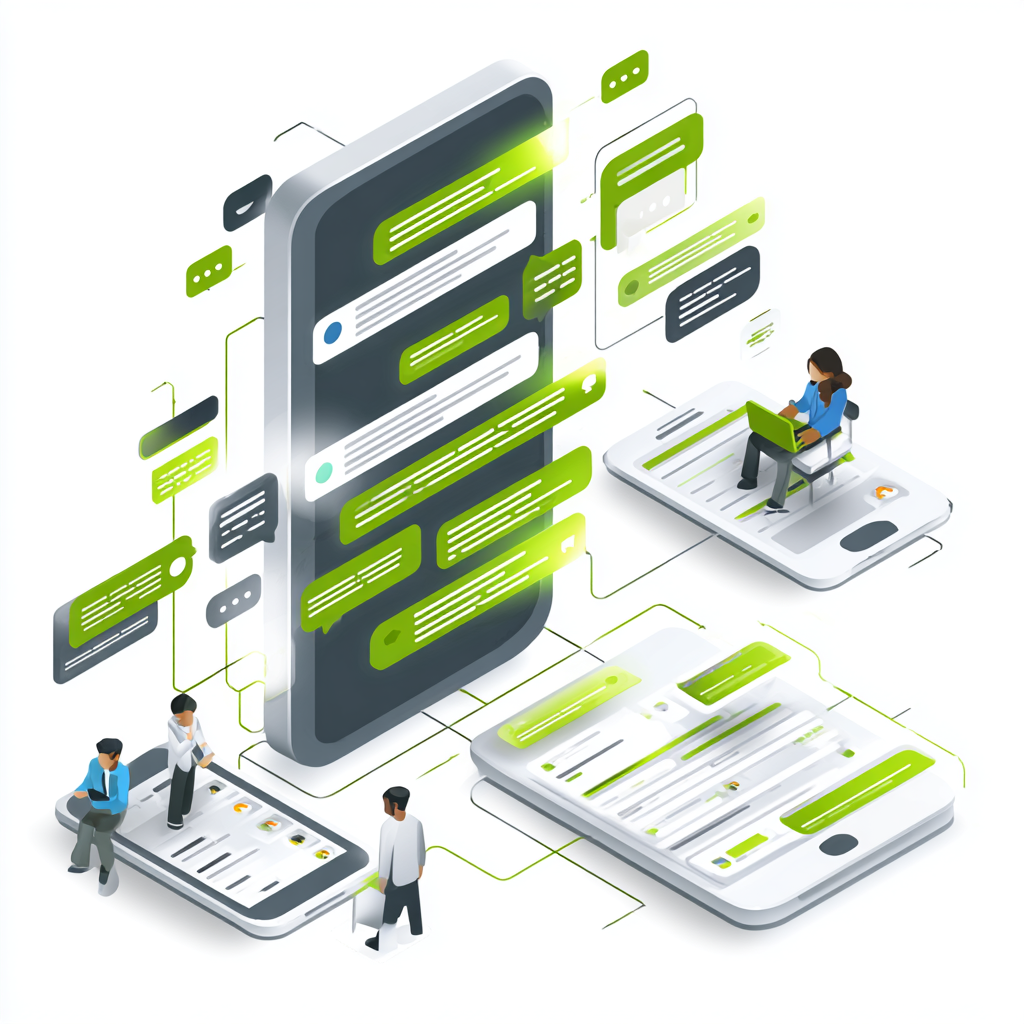Artificial Intelligence (AI) has gone from a futuristic idea to a practical solution, changing how businesses interact with customers. Customer experience is a key competitive advantage. Companies that can meet customers where they are, understand their needs, and respond quickly are winning the loyalty game, and AI is making that possible. This article breaks down the top 7 AI applications in customer experience that businesses use to deliver smarter, faster, and more personalized interactions.
What is an AI customer experience?
AI applications in customer experience use artificial intelligence technologies like machine learning, natural language processing, and predictive analytics to enhance how businesses interact with and serve their customers. This includes everything from personalized recommendations to automated customer support and sentiment analysis. The goal is to provide faster, more relevant, and consistent experiences across all customer touchpoints.
Top 7 AI applications in customer experience
The top 7 AI applications in customer experience include:
1. AI-powered chatbots: Your 24/7 front desk
One of the most visible and widely adopted AI applications is the chatbot. You have probably interacted with one on a website, social media page, or mobile app. These bots are more than just pop-ups; they are powered by natural language processing (NLP) and machine learning algorithms that allow them to understand questions and provide relevant answers.
How it improves customer experience:
- Instant support anytime, day or night
- Reduces wait time and improves response rate
- Handles basic tasks like order tracking, FAQs, or bookings
Real-world example:
E-commerce platforms like Jumia and Shopify use AI chatbots to help users find products, check delivery timelines, and resolve simple complaints. This reduces the workload on human agents and ensures no customer query goes unanswered.
2. Personalized recommendations: Making every customer feel seen
We have all experienced this. You browse for a pair of sneakers, and shortly after, you notice similar products or related accessories appearing on your feed. By analyzing various factors such as browsing history, purchasing patterns, and even the amount of time spent viewing a particular product, Artificial Intelligence can suggest items that might align with your interests, even before you consciously decide.
This process extends beyond merely tracking clicks. It incorporates a wide array of data points, including previous searches, interactions with specific product categories, and even the frequency with which particular pages are revisited.
How it improves customer experience:
- Helps customers discover relevant products or services
- Boosts engagement by showing tailored content
- Increases satisfaction by reducing the time it takes to find what they want
Real-world example:
Streaming services like Netflix use AI to recommend shows and movies based on your viewing history, preferences, and even what people like you are watching. This keeps users engaged and reduces churn.
3. Predictive analytics: Anticipating customer needs
AI is not just reactive; it is predictive. By analyzing large datasets of customer behavior, preferences, and purchase history, businesses can anticipate what customers might need before they even ask for it.
How it improves customer experience:
- Identifies at-risk customers and enables timely intervention
- Forecasts future buying behavior or service needs
- Allows proactive communication and offers
Real-world example:
Telecom companies like MTN and Airtel use predictive analytics to identify customers who are likely to switch providers. They then offer them special deals to retain them, improving customer satisfaction and reducing churn.
4. Voice assistants: Convenience at your command
Voice-enabled AI tools like Alexa, Google Assistant, and Siri are changing how users interact with technology. In customer service, voice assistants handle queries, schedule appointments, and offer hands-free help.
How it improves customer experience:
- Adds convenience and accessibility
- Enables multitasking and quicker interactions
- Offers a more natural and intuitive way to seek help
Real-world example:
Some banks now let customers use voice commands to check balances or make transfers. This saves time and makes financial services more user-friendly.
5. Sentiment analysis: Reading between the lines
Customers might not always say exactly how they feel. That’s where AI-powered sentiment analysis comes in. It scans customer messages, reviews, or social media posts to identify the tone, mood, and satisfaction level.
How it improves customer experience:
- Detects unhappy customers early
- It helps brands respond appropriately and with empathy
- Provides real-time feedback on how customers perceive your brand
Real-world example:
Hotels and hospitality brands use sentiment analysis to monitor guest feedback online. If multiple reviews mention slow service, they can quickly investigate and make improvements.
6. Automated email responses and smart routing
Managing customer emails can be overwhelming. AI helps streamline this by categorizing emails, drafting responses, and routing messages to the appropriate departments.
How it improves customer experience:
- Shortens response times
- Ensures inquiries go to the right team
- Delivers faster, more accurate replies
Real-world example:
Customer support tools like Zendesk and Freshdesk use AI to prioritize and tag incoming emails. Complaints are flagged as high priorities, while general inquiries are routed to self-help options.
7. Feedback analysis: Turning words into action
Collecting customer feedback through surveys or reviews is great, but the real value lies in analyzing and acting on it. AI can quickly sift through thousands of data points to extract trends and actionable insights.
How it improves customer experience:
- Speeds up decision-making
- It helps identify what’s working and what needs improvement
- Provides a deeper understanding of customer expectations
Real-world example:
Retailers use AI to analyze product reviews and detect patterns. If many customers report issues with a product feature, the brand can fix it quickly, leading to better reviews and fewer returns.
Challenges of AI in customer experience
While AI offers numerous benefits for improving customer experience, it also comes with challenges that businesses should navigate carefully:
- Data privacy and security: AI systems rely heavily on data, lots of it. To personalize experiences or make predictions, they need access to customer information like purchase history, location, preferences, and even conversations. It raises major concerns about data privacy and security.
If this data is not stored correctly or protected, it could be vulnerable to breaches, misuse, or leaks. And once customer trust is lost, it is tough to rebuild. Businesses should follow strict data protection laws like GDPR and implement strong encryption and access controls.
- Bias in AI algorithms: AI only knows what it is taught. If the data used to train an AI system is biased or incomplete, the system may produce unfair or discriminatory results. For example, a recommendation engine might favor certain customer groups while ignoring others simply because the training data was not diverse enough.
This bias can damage a brand’s reputation and lead to poor customer experiences. Companies should be proactive about regularly auditing their algorithms and using inclusive data sets to ensure fair and balanced outcomes.
- Loss of human touch: Automation is great for efficiency, but cannot replace human empathy. Some customers still value talking to a real person, especially when dealing with complex or emotional issues like a lost package, billing error, or health-related concerns.
Relying too much on AI can make interactions feel robotic or cold. Let the machines handle repetitive tasks, but leave space for real people to step in when the situation demands empathy and understanding.
- Complex implementation: Rolling out AI tools is not always plug-and-play. It often requires significant time, money, and technical expertise. Integrating AI with legacy systems or existing customer databases can be challenging, especially for small businesses with limited IT resources.
There is also a learning curve; teams need to be trained to use these tools effectively and troubleshoot issues as they arise. AI projects can stall or fail to deliver the expected benefits without a clear strategy and the proper support.
- Customer resistance: Not everyone is excited about chatting with a bot or having their data analyzed by machines. Some customers feel uncomfortable or skeptical about AI, particularly regarding sensitive interactions like medical advice or financial planning. This resistance may come from a lack of trust or simply a preference for human interaction.
Why AI matters for customer experience
AI does not replace human interaction. It enhances it. By automating routine tasks, AI frees your human agents to focus on complex and emotional customer needs. It also offers insights that are hard to spot manually, like future trends or hidden dissatisfaction.
Here are a few added benefits:
- Boosts operational efficiency
- Reduces cost-to-serve
- Increases customer retention
- It improves brand perception. Integrating AI thoughtfully ensures that it complements your customer support team and aligns with your brand values.
Adopting AI for a better customer experience
Customer expectations are higher than ever. They want quick responses, personalized experiences, and consistent support across channels. AI makes it possible to meet these demands without burning out your team or breaking the bank. The potential of AI in customer experience is massive, from chatbots and voice assistants to predictive insights and sentiment analysis. Today, businesses that adopt these tools will be better prepared for tomorrow’s customer needs. If you are serious about customer satisfaction, it is time to explore how these top 7 AI applications in customer experience can work for your brand.





